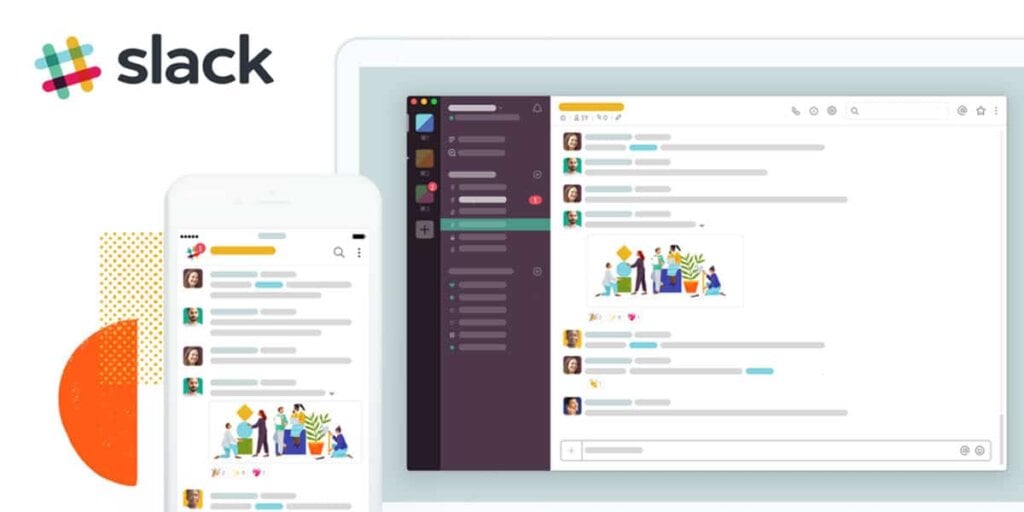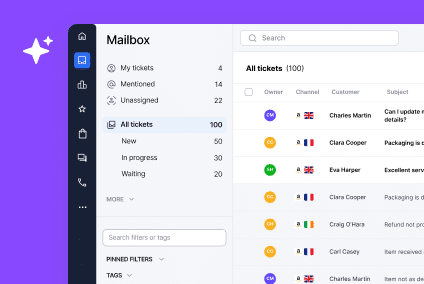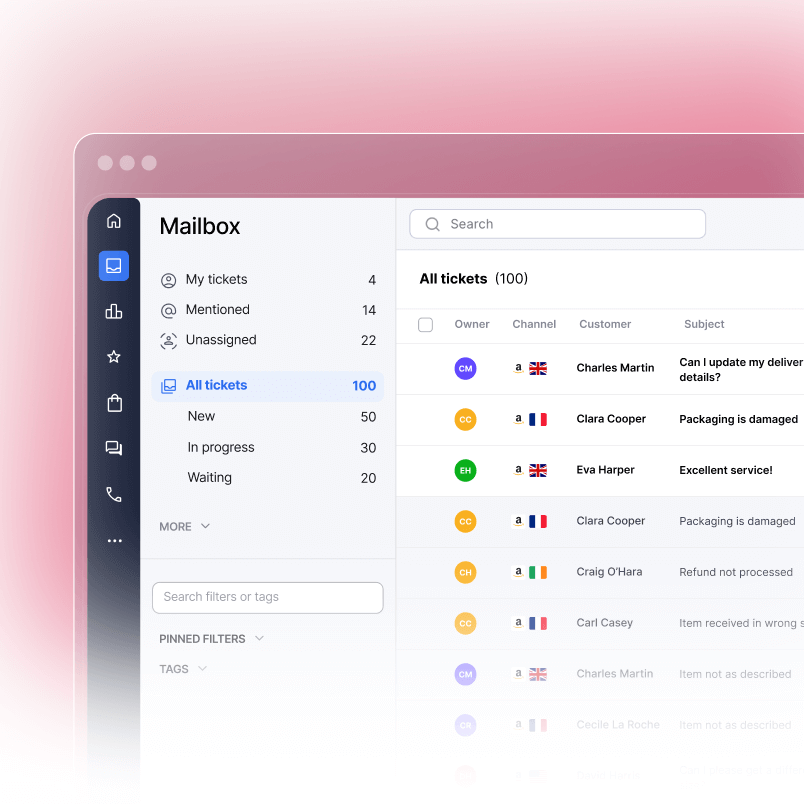As businesses continue to embrace flexible work arrangements, remote customer support has evolved from a temporary solution to a strategic advantage. In 2025, with 76% of workers saying flexibility influences their desire to stay with an employer, companies are recognizing that offering remote work options isn’t just about adaptation but about attracting and retaining top talent.
With 13% of job postings now fully remote and hybrid options continuing to rise, eCommerce retailers and service-based businesses are building distributed teams to meet customer needs more effectively than ever before. This shift represents a fundamental change in how we approach customer service delivery.
Whether you’re transitioning to remote customer support for the first time or optimizing your existing distributed team, these ten evidence-based tips will help you build a more productive, engaged, and successful remote customer service team.
The Strategic Value of Remote Customer Support in 2025
Remote customer support has proven to be more than just a cost-saving measure. Modern data shows that remote workers are 13% more productive than their on-site counterparts, and companies implementing remote support strategies report significant operational advantages.
In 2025, remote customer service teams offer unique benefits that traditional in-office setups struggle to match. These teams can provide 24/7 coverage across multiple time zones, access specialized talent regardless of geographic location, and adapt quickly to fluctuating demand patterns.
eCommerce businesses particularly benefit from remote customer support because online retail operates in a global, always-on environment where customer inquiries arrive at all hours. Remote teams enable businesses to match their support availability with their sales channels’ operational scope.
What is Remote Customer Support?
Remote customer support refers to customer service delivery where support representatives work from distributed locations rather than centralized offices. This model leverages cloud-based technologies, collaborative platforms, and integrated communication systems to maintain service quality and team cohesion.
Unlike traditional call centers with co-located agents, remote customer service teams operate as distributed networks of professionals who collaborate through digital channels while serving customers from their optimal work environments.
The sophistication of remote customer support in 2025 extends far beyond basic work-from-home arrangements. Modern implementations include AI-powered workflow automation, real-time performance analytics, and seamless integration between remote agents and business systems.

Benefits of Remote Customer Support Teams
The advantages of remote customer support have become increasingly clear as organizations gather data on distributed team performance:
Enhanced Talent Access and Retention
Remote customer service teams allow hiring based on skills and cultural fit rather than geographic proximity. This expanded talent pool is particularly valuable for companies serving diverse markets, as they can hire native speakers and cultural experts who understand specific customer segments.
Research shows that 80% of employees prefer remote work options, directly impacting retention. Companies offering remote customer support positions report lower turnover rates and higher employee satisfaction scores.
Operational Efficiency and Cost Benefits
Remote work reduces facilities costs, increases productivity, and provides a better work-life balance for staff. Studies indicate that businesses can reduce operational costs by 25-30% through strategic remote work implementation while maintaining or improving service quality.
Scalability and Flexibility
Remote customer service teams can scale more rapidly than traditional setups. During peak seasons or unexpected demand spikes, companies can onboard remote agents faster and more cost-effectively than expanding physical facilities.
Global Coverage Capabilities
Distributed teams naturally enable follow-the-sun support models, where customer inquiries are handled by agents in appropriate time zones. This approach reduces response times and provides more natural coverage for international eCommerce operations.

10 Pro Tips for Managing Remote Customer Support Teams
Despite all the benefits of remote work, managing distributed teams requires intentional strategies and modern tools. The following tips will help you create an organized, productive, and engaged remote customer support team.
1. Develop Collaborative Remote Work Policies
Successful remote customer support begins with comprehensive policies developed through team input. Rather than imposing top-down rules, involve your agents in creating guidelines that address real challenges they face daily.
Establish clear protocols for:
- Communication response times and availability windows
- Escalation procedures for complex customer issues
- Documentation standards for case notes and knowledge sharing
- Quality assurance and performance evaluation criteria
For larger teams spanning multiple departments or markets, designate representatives from each section to ensure all perspectives are included. This collaborative approach makes team members feel heard and creates policies that actually work in practice.
Regular policy reviews ensure your guidelines evolve with changing business needs and team feedback.

2. Implement Integrated Technology Solutions
Choosing the right remote customer support tools significantly impacts communication, organization, workflow efficiency, and team management. Modern teams need integrated solutions rather than disconnected point tools.
Essential technology categories include:
Collaborative Documentation Platforms: Google Workspace or Microsoft 365 for shared knowledge bases and real-time document collaboration
Team Communication Systems: Slack, Microsoft Teams, or Discord for instant messaging, file sharing, and channel-based organization
Project and Task Management: Asana, Trello, or Monday.com for workflow coordination and progress tracking
Customer Support Platforms: Comprehensive customer support software with shared inbox capabilities and multi-channel integration

Cloud-based solutions provide the accessibility and reliability essential for distributed teams. However, avoid tool proliferation. Employees switching between an average of 10 different apps daily leads to fragmented workflows and communication gaps.
Instead, choose integrated platforms that combine multiple functions. For example, the right customer service software can centralize communications from email, chat, social media, and marketplace channels into a single interface.
3. Invest in Advanced Customer Support Software
The foundation of effective remote customer support is robust customer support software designed for distributed team collaboration. Modern platforms provide capabilities that were impossible with traditional phone-based systems.
Key features for remote customer service teams include:
Unified Inbox Management: Consolidate customer inquiries from all channels into shared workspaces where any team member can respond
Automated Routing and Prioritization: Intelligent ticket assignment based on agent expertise, workload, and customer priority levels
Real-time Collaboration Tools: Internal notes, case transfers, and collaborative problem-solving features
Performance Analytics: Detailed metrics on response times, resolution rates, customer satisfaction, and individual agent performance
Integration Capabilities: Seamless connections with eCommerce platforms, CRM systems, and business intelligence tools
The right platform reduces the complexity of managing distributed teams while improving customer service quality. Agents can access complete customer histories, collaborate on complex cases, and maintain consistent service standards regardless of location.
4. Create Comprehensive Documentation Systems
Remote customer service teams can’t rely on informal desk-side conversations for knowledge transfer. Comprehensive documentation becomes critical for consistency and efficiency.
Develop searchable, accessible resources that include:
Policy and Procedure Guides: Clear explanations of company policies, escalation procedures, and decision-making frameworks
Product Knowledge Bases: Detailed information about products, services, features, and common troubleshooting steps
Customer Service Case Studies: Real examples of complex situations and their resolutions, helping agents learn from experience
Tool and System Guides: Step-by-step instructions for using customer support software, CRM systems, and other business tools
FAQ Collections: Answers to common internal questions about processes, policies, and system functionality

Make documentation dynamic and collaborative. When agents discover new solutions or encounter novel situations, they should be able to contribute to the knowledge base immediately. This approach creates learning resources that evolve with your business and customer needs.
Implement regular documentation reviews to ensure information remains current as tools, policies, and procedures change.
5. Foster Communication and Team Culture
The biggest challenges facing remote workers are loneliness and collaboration difficulties. Remote customer service teams require intentional culture-building to maintain engagement and effectiveness.
Successful strategies include:
Regular Team Meetings: Daily stand-ups and weekly team meetings keep everyone aligned on priorities and challenges
One-on-One Check-ins: Frequent individual conversations between managers and team members for personalized support and career development
Informal Communication Channels: Dedicated Slack channels or chat rooms for casual conversation, team bonding, and non-work interactions
Virtual Team Building: Online activities, virtual coffee breaks, and shared experiences that build relationships across distances
Encourage participation from quieter team members and create multiple opportunities for different personality types to engage. Some agents thrive in group video calls, while others prefer written communication or smaller group interactions.
Successful remote customer support teams develop strong cultures of mutual support, knowledge sharing, and collective problem-solving that transcend physical distance.

6. Optimize Workflows for Distributed Teams
Remote work requires different management approaches than traditional office environments. Apply agile methodologies to break complex tasks into manageable components with regular progress check-ins.
Remote customer service teams benefit from:
Clear Task Definition: Specific, measurable objectives with defined success criteria and deadlines
Regular Progress Reviews: Frequent check-ins that identify obstacles early and provide support before problems escalate
Flexible Scheduling: Accommodating different time zones, personal circumstances, and peak productivity periods
Performance Transparency: Clear metrics and regular feedback that help agents understand their impact and improvement opportunities
Use task management tools to provide visibility into individual and team performance while avoiding micromanagement. The goal is accountability and support, not surveillance.
7. Streamline Remote Onboarding Processes
Starting a remote customer support role involves unique challenges. New agents must learn products, policies, tools, and team dynamics without the benefit of informal office interactions.
Effective remote onboarding includes:
Structured Learning Paths: Progressive training modules that build knowledge systematically over several weeks
Buddy Systems: Pairing new agents with experienced team members for mentoring and informal support
Hands-on Practice: Safe environments for practicing customer service scenarios before handling live customer interactions
Technology Setup: Comprehensive assistance with software installation, system access, and troubleshooting
Cultural Integration: Introductions to team members, company values, and communication norms
Your documentation library becomes essential reading for new team members. Pre-written template responses and common scenario guides help newcomers understand customer interaction patterns and company voice.
Modern customer support software often includes training modes where new agents can practice with simulated customer interactions before handling real cases.
8. Enable Authentic Customer Connections
Remote customer service teams can deliver exceptional customer service by balancing efficiency with genuine human connection. Technology should enhance rather than replace the human elements that build customer loyalty.
Strategies for authentic engagement include:
Personalized Responses: Training agents to customize communications based on customer history, preferences, and current situations
Proactive Communication: Reaching out to customers with helpful information, order updates, or service improvements
Solution-Focused Approach: Empowering agents to solve problems creatively rather than strictly following scripts
Emotional Intelligence: Teaching agents to recognize customer emotions and respond appropriately through written and verbal communication

Modern customers expect both speed and authenticity. With 90% of customers saying quick responses are critical and 83% feeling more loyal to brands that listen and resolve complaints, remote customer support teams must excel at rapid, empathetic problem-solving.
Use technology to handle routine inquiries efficiently, freeing agents to focus on complex situations requiring human judgment and creativity. This approach delivers the best of both worlds: systematic efficiency and personal touch.
9. Establish Clear Performance Metrics
Key Performance Indicators (KPIs) keep remote customer service teams focused on shared objectives while providing data for continuous improvement. Well-chosen metrics motivate excellent performance and identify areas needing additional support.
Essential KPIs for remote customer support include:
Customer Satisfaction Scores (CSAT): Direct feedback on service quality and customer experience
Net Promoter Score (NPS): Measuring customer loyalty and likelihood to recommend your company
First Contact Resolution Rate: Percentage of issues resolved without requiring follow-up interactions
Average Response Time: Speed of initial customer contact across all channels
Resolution Time: Complete time from initial contact to final resolution
Ticket Volume per Agent: Balanced workload distribution and capacity planning
Quality Scores: Evaluation of communication quality, problem-solving effectiveness, and policy adherence
Present metrics in context with team goals and individual development objectives. Use data to identify training opportunities, process improvements, and recognition opportunities rather than solely for performance evaluation.
Regular metric reviews with individual team members help agents understand their impact and identify areas for professional growth.
10. Build Trust Through Empowerment
Remote customer support succeeds when managers trust their teams and provide appropriate autonomy. Micromanagement destroys the productivity benefits of remote work and creates employee dissatisfaction.
Effective trust-building includes:
Clear Expectations: Well-defined outcomes and quality standards that allow agents to determine how best to achieve results
Decision-Making Authority: Empowering agents to resolve customer issues within defined parameters without constant approval
Regular Communication: Scheduled check-ins focused on support and development rather than oversight
Professional Development: Investing in agent skills and career growth to demonstrate long-term commitment
Recognition Programs: Acknowledging excellent performance and innovative problem-solving approaches
Trust develops through consistent actions and clear communication. When agents understand expectations and feel supported, they perform better and contribute more to team success.
Use one-on-one meetings to discuss performance, career goals, and any challenges agents face. This personal attention helps identify issues early and reinforces that management cares about individual success.
Advanced Strategies for 2025
AI Integration and Automation
Modern remote customer support increasingly incorporates AI assistance to enhance agent capabilities. With 85% of customer interactions expected to be handled without human involvement by 2025, remote customer service teams must balance automation with human expertise.
Effective AI integration includes:
- Automated routing of routine inquiries to self-service resources
- AI-powered response suggestions for common scenarios
- Real-time sentiment analysis to identify escalation needs
- Automated quality assurance and performance coaching
Omnichannel Excellence
Customers expect seamless experiences across all communication channels. Remote customer support teams must maintain consistency, whether customers contact them via email, chat, social media, or phone.
Use unified platforms that provide complete interaction histories and enable smooth transitions between channels and agents.
Data-Driven Optimization
Advanced analytics help remote customer service teams continuously improve performance. Monitor trends in customer inquiries, resolution patterns, and agent performance to identify optimization opportunities.
Regular analysis of support data reveals training needs, process improvements, and customer experience enhancement opportunities.
Final Thoughts
Remote customer support has evolved into a sophisticated, strategic approach to customer service delivery. Success requires intentional investment in technology, processes, and team development.
By implementing comprehensive documentation systems, investing in integrated technology solutions, and fostering strong team cultures, companies can build remote customer service teams that outperform traditional office-based operations.
The key is recognizing that remote customer support isn’t simply office work done from home – it’s a fundamentally different approach that leverages technology and distributed talent to deliver superior customer service.
As businesses continue adapting to flexible work models, those who master remote customer support management will gain significant competitive advantages in talent acquisition, operational efficiency, and customer satisfaction.
Consider partnering with platforms like eDesk that provide comprehensive remote customer support tools designed specifically for distributed eCommerce teams. These solutions integrate with major marketplaces and provide the collaboration features essential for remote customer service excellence.
The future of customer support is distributed, technology-enabled, and more responsive than ever before. Organizations that embrace this evolution position themselves for sustained success in an increasingly competitive marketplace.
Book a free demo today to learn more about how eDesk can help you make the most of remote customer support opportunities.




